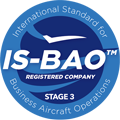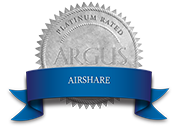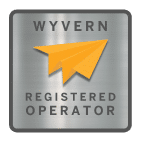Airshare has always had a slightly different model to other private aviation companies, with both its fractional and jet card products built on a day-based program, rather than the more common hours-based programs.
“The real beauty of the model is day based,” said John Owen “the plane and the pilot are yours for the day.” “We have customers who get 80 hours of flight time out of a 1/16 share,” he continued.
The day-based program produces a lot of flights that are out and back in the same day. This is also great for the pilots, because they can stay home 20 days a month said John. This also means that customers flying out of a given base will get to see the same pilots, and the pilots get to know their customers and “it really starts to feel like your plane”, John added.
Aircraft Fleet
Airshare used to have a fleet that included the King Air 350i, Citation CJ2+, and Learjet 45XR, but have recently phased these out to focus on the Phenom 100 and Phenom 300 light jets.
“Operating 5 fleet types can be very inefficient, it’s much more efficient to have just 2 types of plane,” John explained. “We pass those efficiencies on to the customer, so the all-in cost can be under $4,000 per hour,” he continued.
The Phenom 300 has a range of 1,970 nm and seating for up to 8 and 76 cubic feet of luggage space, while the Phenom 100 has a range of 1,178 nm and seating for up to 5 with 60 cubic feet of luggage space. Under the Airshare program customers who own in the 300 can interchange into the 100 by using just 0.6 days.
Airshare also manages bigger planes for people, so the fractional and card holders have access to these charter aircraft if they need more capacity or a longer range than the Phenoms provide.
New Locations
The two biggest markets for Airshare are Kansas City and the Dallas/Fort Worth area, with about 70% of customers within these two locations.
About 80% of Airshare’s customers are businesses clients, and they already have clients flying up to the mid-west. “Our Upper Midwest expansion allows us to aggressively grow our customer base with the most efficient fractional program in private aviation. The addition of these markets will greatly enhance the service we provide to our existing customers as well,” said John.
Overall, Airshare averages more than 12,000 flights annually with travelers also going cross-country and to places like Mexico and the Caribbean. John noted that while only about 20% of their customer base are leisure, about 1/3 of their flights are leisure flights and some of their most popular travel spots include Aspen, Napa Valley, and Grand Cayman.
The aircraft themselves don’t have a specific fixed base but float around based on where they need to go. For customers, there are no repositioning fees to bring the aircraft to them and there’s even a 40% discount on round trips, compared to the one-way rate.
New Embark 325 Jet Card
A 1/16 fractional share provides 20 days of use and their Embark jet card provides 10 days of use throughout the year.
Airshare recently launched a new “Embark 325” card, which still provides 10 days of use, but with 40 blackout days per year, so is aimed at people who don’t need to travel on those peak 40 days. Pricing for both cards is structured as an annual fee and then an hourly rate for the hours you fly on your 10 days. This new Embark 325 card is priced with a 20% discount on the annual fee but the same hourly rate.
“We treat card holders like a fractional owner and allocate 1/32nd to each card holder exclusively on our fractional fleet,” commented John.
Airshare says it has seen growth of 200% over the past decade and has plans for further expansion into the Northeast. “We plan to double the size of our revenue and customer base in the next three years, along with significantly growing our overall fleet,” said John.
Sherpa Report, Nick Copley. Read the full article here.







